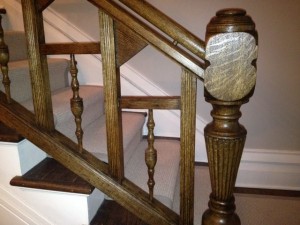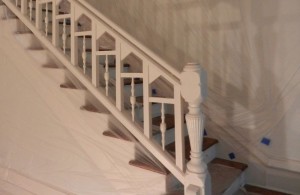The word “faux” means “false” in French and faux painting consists of an array of tools, techniques and materials used by painters to make painted surfaces appear to be made of something they are not. The techniques of faux painting have been developed over millennia of human history. Over time, the driving force behind the development of faux finishing has been the cost of the real materials or their unavailability/scarcity at that point in time. People resorted to paints to replicate nature’s master touch.
What are some of the materials faux painters have imitated in the past? The list is far too long to enumerate here. Here are some: marbles, wood species, skins like leather, precious stone like Lapis, stone, brick etc. For instance, Venetian plaster was developed to imitate the look and feel of marble. Egyptians invented gilding out of their love of gold and their passion to have things look like they were made of solid gold. Romans got into the act as well and gilded their walls and ceilings.
What are surfaces in today’s residences that sometime beg to be made less conspicuous”? Those are good candidates for faux painting. As shown in our picture, we faux painted heating vents on slate flooring. Heating vents are often found on marble floor surfaces, especially in bathrooms and foyers. Sometime, they are also incorporated into baseboards and can be grained to match the surrounding wood color. As shown by the other picture, outlet covers are also good candidates for faux finishing, especially on the stone or marble backsplash of kitchens.
Pillars, moldings and niches present the opposite opportunity: they beg to be made more evident! Marble or stone faux finishes add richness and class to those surfaces and any room they in. Before having any faux painting done in your house, make sure the painting contractor you hire prepares a sample for your approval. This year marks our twenty-fifth anniversary as a painting and decorating company in the Chicago area. It has been a pleasure to disguise and embellish so many things over the years!







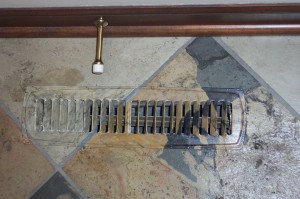
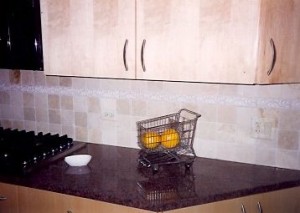
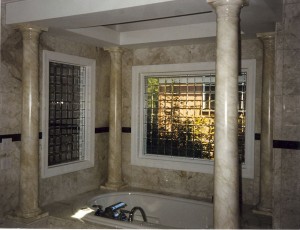
 Follow
Follow

